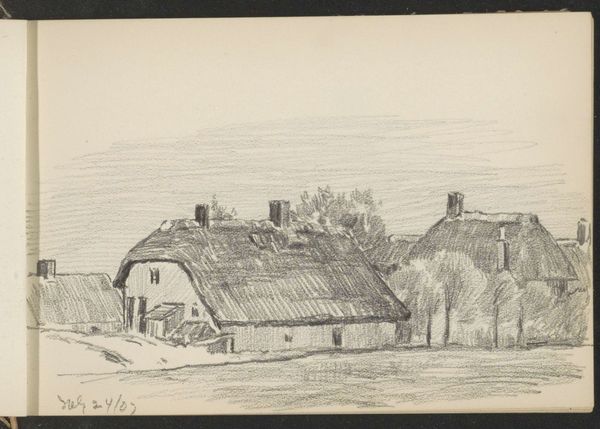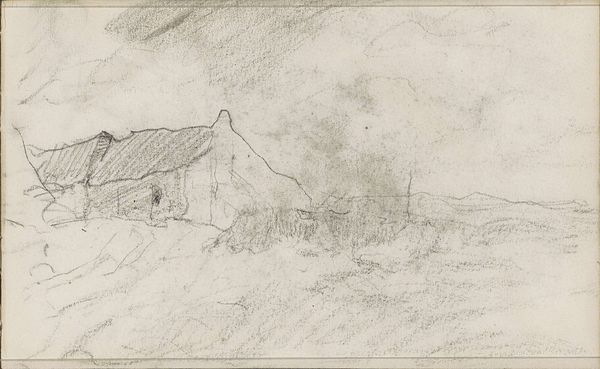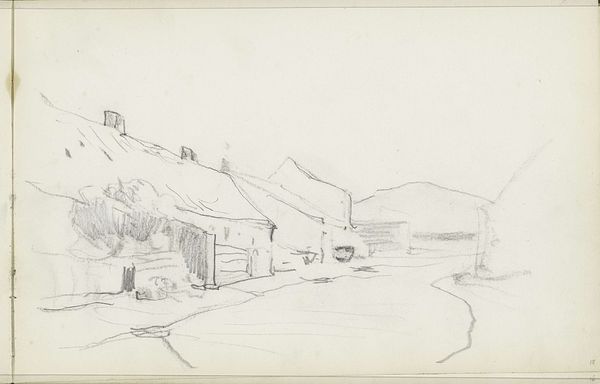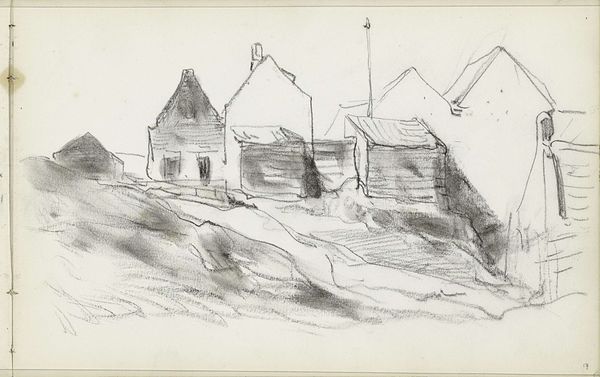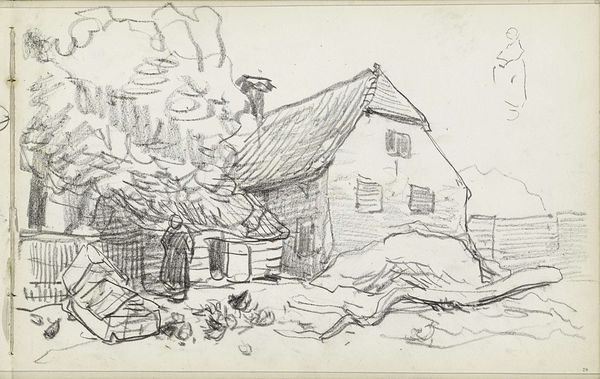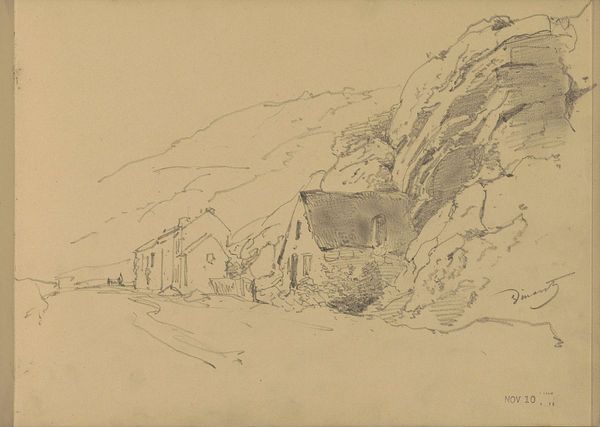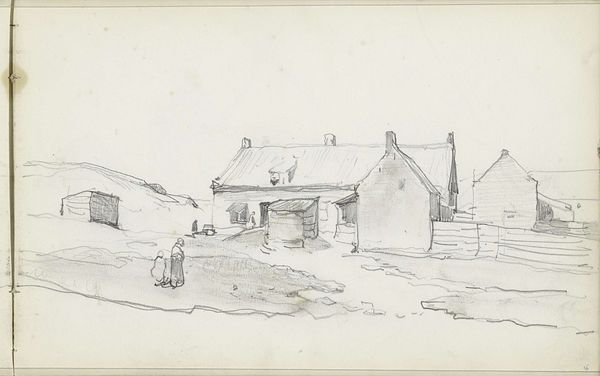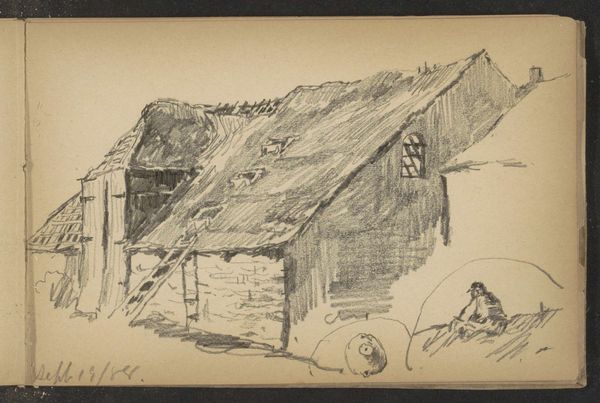
Copyright: Rijks Museum: Open Domain
Curator: Looking at "Houses at the Foot of the Alps" by Isaac Gosschalk, created around 1860 to 1861, you get a sense of tranquility even within what looks like quite a rugged landscape. Editor: There is definitely a stillness. The limited tonal range, restricted to pencil strokes, evokes a silent hush over the scene. What do you see here, in terms of symbolism? Curator: Immediately I note the very clear foreground-background distinction—the detailed houses juxtaposed against the sketched mountains behind them, suggesting a safe haven in a harsh, natural world. This connects with the Romanticism of the period, the sense of nature's awe-inspiring power contrasted with human's attempts to dwell peacefully within it. Editor: I find myself questioning that supposed peace. The heavy lines outlining the roofs feel weighted, burdened even. I wonder, given the period, could the artist be subconsciously conveying the burdens of labour in such rural, possibly isolated settings? Or perhaps speaking about class differences? After all, even in "romantic" landscape, humans and societal roles exist. Curator: It's a potent point. Considering Gosschalk’s artistic milieu, that interpretation has a certain weight. Remember also that humble dwellings, like those meticulously rendered here in pencil, recur throughout art history to symbolise honesty and closeness to the earth. Editor: Precisely. We shouldn’t disregard these connotations! Also, the choice of simple pencil on paper—it democratises the image. A print would potentially elevate it into something "picturesque" for drawing rooms, but pencil retains a rawness. It also leaves us considering who these humble abodes actually belong to. Curator: Looking more carefully, note how each roof has its individual peaks and angles. Individuality amidst the whole. Perhaps a quiet affirmation of personal identity surviving even in nature's overwhelming panorama? Editor: I like that idea very much. For me, those little differences speak quietly of resilience in face of vast forces – sociopolitical and elemental. That tension, in my mind, makes it all feel incredibly vital, still. Curator: Indeed. Seeing these houses huddled near what appears to be very stark rock gives an almost elemental charge, it has layers of potential human meanings contained within deceptively quiet simplicity. Editor: Agreed. Gosschalk’s humble little sketch reminds us that images are not always just about surface appeal, but also offer portals into considering societal constructs in broader historical moments.
Comments
No comments
Be the first to comment and join the conversation on the ultimate creative platform.
